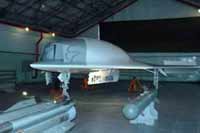Russia’s Sukhoi and MiG working on unmanned combat air vehicles
Mikhail Pogosyan, the General Director of Russia’s aircraft-building giant Sukhoi, stated at the Farnborough International Airshow that the sixth generation of the Russian combat aviation would be unmanned.

For the time being, the Russian Armed Forces have only one domestic unmanned vehicle complex – Stroi-P complex with its Pchela-1T aircraft. The complex proved to be successful during military actions in the Caucasus, especially during the first and the second Chechen campaigns. Stroi-P successfully provided reconnaissance information to Russian troops during combat actions in Chechnya. However, the Russian unmanned system has become outdated and inferior to modern systems made in other countries of the world.
Another Russia’s aircraft design bureau, MiG, said last year that it was developing a combat unmanned aircraft known as Skat (Stingray). However, the company added that it was its own initiative which the state had not supported yet.
The MiG program is one of two competing designs that will be presented to the Russian Defense Ministry as a strike unmanned combat air vehicle (UCAV), aviationweek reports.
MiG unveiled the program during the Moscow air show, though only a few journalists were taken off the show site to a MiG facility at the Gromov flight test research institute.
Skat has two internal weapons bays, capable of carrying air-to-surface missiles as large as the Kh-31 (AS-17 Krytpon). Possible roles include the suppression and attack of enemy air defenses.
MiG is working with a number of Russian companies and state institutes - including the 2nd Central Scientific Research Institute - on Skat. The institute is known to be closely involved in low-observable research and development.
The first version of Skat to fly is planned to be piloted in order to meet Russian flight regulations. A number of aerodynamic configurations have been wind-tunnel tested, including with small twin fins. MiG has settled on a tail-less configuration.
The single-engine subsonic design has an 11.5 meter wingspan, and it is 10.25 meters long. The UCAV has a maximum take-off weight of 10 tons, with a maximum speed of 800 kilometers per hour (497 mph) at low altitude. It is intended to carry a combat load of up to two tons, with a combat radius of 2,000 km.
The Skat will be powered by the Klimov RD-5000B, a derivative of the RD-93. Two demonstrators will be built, the second will be unmanned. The flight tests will be used to prove the design and air vehicle systems. Weapon firings will also be carried out.
Subscribe to Pravda.Ru Telegram channel, Facebook, RSS!



